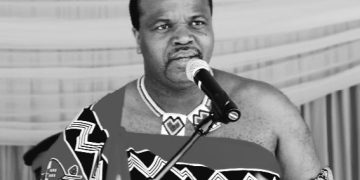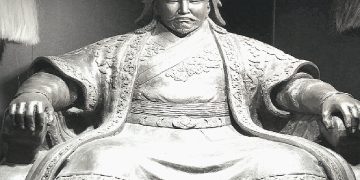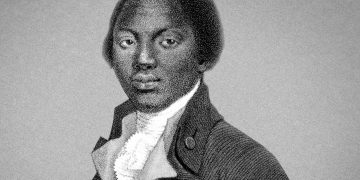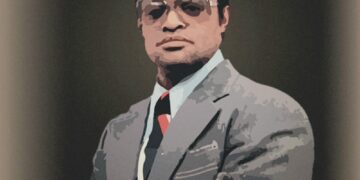William Morris was born on 21st March 1834. His parents were fairly wealthy middle class people and, including William had eight children. The family lived in Walthamstow, Essex, but moved to Woodford when William was six years old. From the age of nine William attended the Misses Arundale’s Academy for Young Gentlemen. In September 1847 William’s father died and the following year the family moved back to Walthamstow and William was sent to Marlborough College. William left Marlborough College in 1851 after receiving very poor end of year results and was tutored privately by the Reverend Guy. In January 1853 he began studying theology at Exeter College, Oxford.
At Exeter College, Oxford, William became friends with Edward Burne-Jones who, like William, had a keen interest in Medieval architecture. In November 1853 William wrote ‘The Dedication of the Temple’ which is thought to have been his first poem. In the Summer of 1854, the publication of John Ruskin’s Edinburgh Lectures introduced the pair to the Pre-Raphaelite movement. In August 1854 William visited Belgium and spent time looking at Medieval paintings.
By 1855 William Morris had decided that he would not pursue a religious career but would prefer to be an artist. Morris took and passed his degree then after leaving university he took a job in an architects office as an apprentice. His mentor was Phillip Webb and the two became good friends. After a year William decided that he was not meant to be an architect and gave up the apprenticeship determined to become an artist. Morris’s first book of poems ‘The Defence of Guenevere’ were published in March 1857 but the book did not do well at all.
In 1857 William met Jane Burden, a striking working class girl and asked her to model for him. The pair became lovers in the Spring of 1858 and were married on April 26th 1859. Morris spent the rest of the year completing The Red House which he had designed in conjunction with his friend the architect, Philip Webb. The couple had two daughters, Jane Alice born in 1861 and Mary ‘May’ born in 1862.
On 11th April 1861 Morris, Ford Madox Brown, Edward Burne-Jones, Charles Faulkner, Dante Gabriel Rossetti, P. P. Marshall, and Philip Webb founded Morris, Marshall, Faulkner & Co a home furnishings company that would provide Medieval inspired carving, stained glass, metal-work, paper-hangings, chintzes (printed fabrics), and carpets. In 1862 the company exhibited at the Great London Exposition – an international exhibition of arts, technology and industry and attracted much business. The same year Morris began designing wallpaper. Work commitments meant long hours spent at work in London and in 1865 Morris decided to sell the Red House and move to London.
By 1867 Morris had become increasingly isolated from his wife who was spending more and more time with Rossetti whose wife had died in 1862. He began writing poetry and in 1867 published ‘The Life and Death of Jason’ which was followed two years later by ‘The Earthly Paradise’. In 1871 he moved his family to Kelmscott Manor in Oxfordshire which he jointly leased with Rossetti. Later that year he went on a trip to Iceland, having become deeply interested in the Icelandic sagas. In 1873 Morris made a return to Iceland after touring Northern Italy with Burne-Jones.
In March of 1875 Morris dissolved Morris, Marshall, Faulkner and Co and set up a new company Morris and Co. He focused the work of the new company on textiles and began studying different methods of dying and printing cloth. In 1877 the company opened its first shop in Oxford Street London.
Largely influenced by the social situation in Iceland, Morris had become very interested in socialism. In 1877 he published two works Sigurd the Volsung and The Fall of the Niblungs. In 1878 Morris moved his family back to London and purchased Kelmscott House in Hammersmith. In 1882 Morris published ‘Hopes and Fears of Art’ and the following year he was made a fellow of Exeter University. In 1884 Morris had returned his attention to politics and published two political socialist works ‘Art and Socialism’ and ‘A Summary of the Principles of Socialism’ as well as founding the Socialist League. In 1885 he wrote Useful ‘Work versus Useless Toil’ and his ‘Chants for Socialists’.
By 1888 Socialism was taking up increasing amounts of his time and he began giving a collection of lectures entitled ‘Signs of Change’. in 1889 he attended the International Socialist Convention in Paris and on his return founded the Hammersmith Socialist League. In 1891 Morris founded the Kelmscott Press, a printing establishment where he could print works that he considered the epitome of beauty. In 1892 following the death of Alfred, Lord Tennyson, Morris was offered the position of Poet Laureate but turned it down. In 1894 Morris published a work of prose ‘The Wood Beyond the World’. William Morris died on 3rd October 1896 at Kelmscott House.












